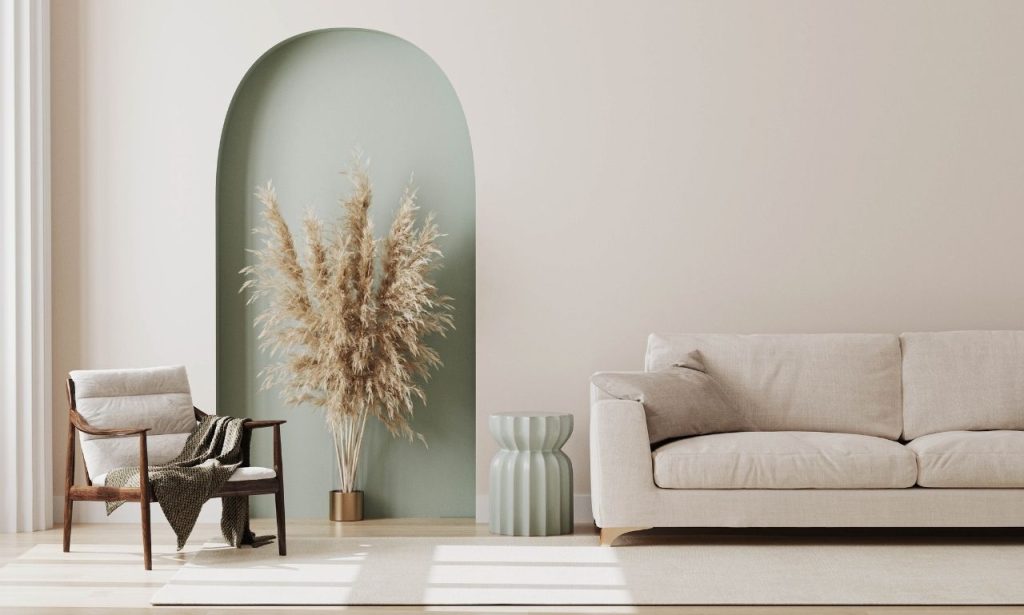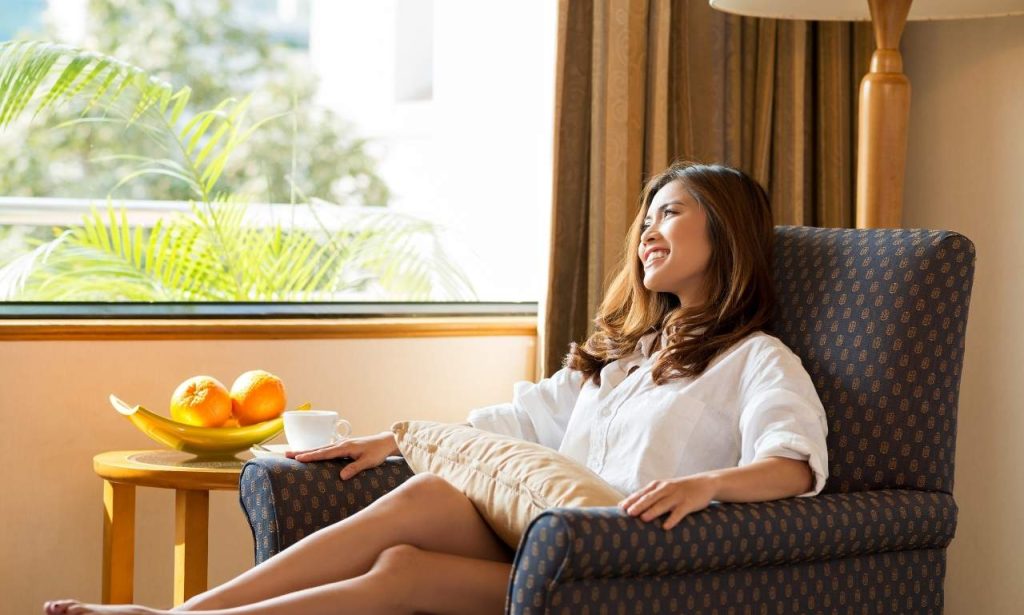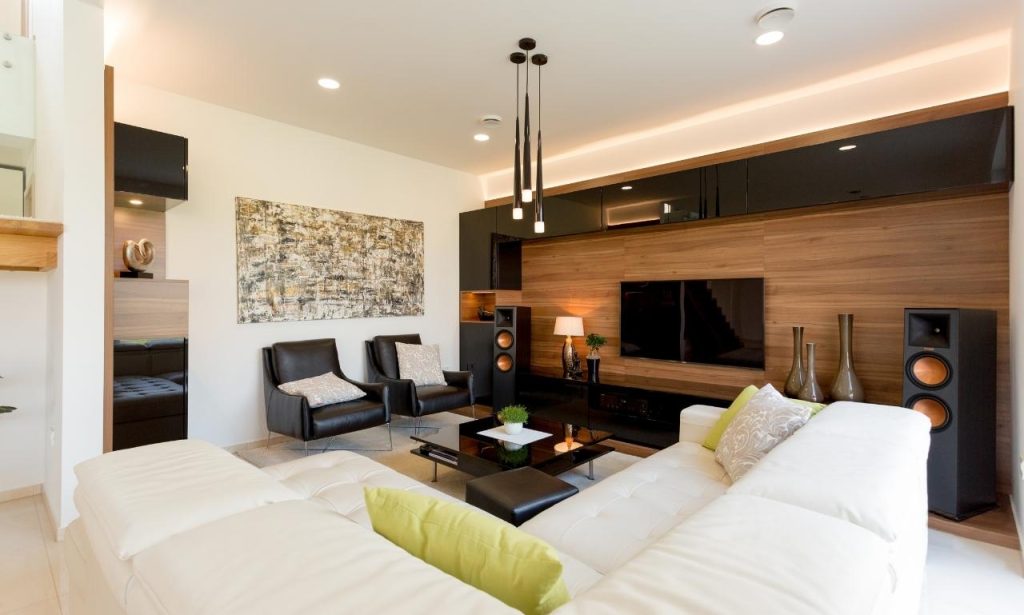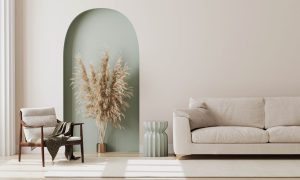Our homes represent the condition of our mental state, so a house filled with clutter typically leads to mental disorganization. Six years ago, I created a minimalist sanctuary within my living quarters. The transformation extended beyond visual elements because it influenced my work efficiency and mental serenity. Minimalism does not require empty spaces or white wall surfaces. To achieve clarity, we should select things that serve valuable functions while surrounding ourselves with essential elements.
Our fast-paced world forces people to accumulate items beyond their requirements. The mass media uses advertisements to persuade people that buying new possessions leads to happiness. Reducing possessions reveals freedom to numerous individuals. A minimalist design provides peace and silence by removing excess noise from your home environment.
Reasons to Embrace a Minimalist Home

Cleaning a minimalist space requires only half the time required to clean spaces filled with clutter. Fewer items collect dust. Quick cleaning becomes possible because all surfaces remain dust-free. The workload of weekly household tasks becomes easier to handle than it would be with excessive clutter. The time efficiency builds up substantially throughout multiple months and years.
According to a Slickdeals survey, Americans spend $5,400 annually on impulse purchases. Minimalism challenges this consumption habit. You buy less overall. You invest in quality over quantity. The financial impact extends beyond your immediate budget to long-term savings.
Mental clarity emerges as perhaps the greatest benefit. UCLA researchers found a direct link between cluttered homes and stress hormones in women. Participants with tidier homes showed lower cortisol levels throughout the day, improved cognitive performance, and stabilized mood.
I’ve seen these benefits firsthand with my clients. One business owner cleared her home office of excess furniture and files. Her productivity jumped 30% the following month. She credited the calm environment with helping her focus better on important tasks. The visual quiet allowed her brain to work without constant distraction.
Your home should restore you, not drain you. Minimalist spaces naturally create this restorative environment. They limit sensory input, provide visual breaks, and reduce the mental load of managing possessions. This restoration affects everything from sleep quality to creativity levels.
How Can I Make My Home More Minimalist?
Start by defining your “why” behind minimalism. Different motivations lead to different approaches. Some seek visual calm, others want environmental sustainability, and many need better organization. Your personal goals will shape which minimalist principles matter most to you.
Take stock of what you already own before removing anything. Most people underestimate their possessions by 50%. Count items in one drawer or closet. The numbers might shock you. This awareness helps break the automatic cycle of accumulation most of us fall into.
Consider documenting your space with before photos. These provide powerful motivation when you see progress later. They also help you remember why you started if your motivation wanes during the process. Visual confirmation of improvement keeps most people going through challenging decisions.
The one-year rule helps many beginners make tough choices. If you haven’t used something in twelve months, it probably doesn’t deserve your space. Seasonal items get one pass, but most other things prove their value through actual use. This simple guideline cuts through emotional attachments to rarely-used possessions.
Color plays a crucial role in minimalist design success. Limit your palette to three main colors plus one accent. This constraint creates visual harmony without feeling boring. Whites, grays, and natural wood tones form classic minimalist foundations. Add mustard yellow or navy blue for personality without chaos.
Simple Tips For A Minimalist Home
Be intentional about leaving white space
White space acts as a visual palate cleanser in your home. It gives your eyes places to rest. Many homeowners feel compelled to fill every shelf and wall, but this impulse works against minimalist principles. Train yourself to appreciate emptiness as an intentional design element rather than something needing correction.
Last year, I consulted with a family who wanted a minimalist living room. They had beautiful furniture but couldn’t understand why the space felt chaotic. After removing two side tables and leaving one shelf completely empty, everything changed. The remaining pieces suddenly had presence and importance. The room finally breathed.
Leave at least 20% of each surface clear. This applies to walls, countertops, shelves, and tabletops. These breathing spaces create the relaxed atmosphere that minimalism promises. They highlight your chosen pieces rather than competing with them. Over time, you might increase this percentage as you appreciate the benefits.
Declutter—starting with your pain points
Identify which areas cause daily frustration and start there. Maybe it’s the entryway where mail piles up. Perhaps it’s the kitchen counter that never stays clear. These pain points drain your energy multiple times daily. Solving them provides immediate relief and builds momentum for bigger projects.
The bathroom often holds surprising amounts of clutter. Half-empty bottles, expired medications, and unused tools hide in cabinets. Pull everything out and sort ruthlessly. Most people find they use less than 20% of their bathroom products regularly. Keep only what serves your current needs and routines.
Closets benefit tremendously from minimalist attention. The average American wears only 20% of their clothes 80% of the time. Remove anything that doesn’t fit, flatter, or feel good. Create space between hangers so garments hang freely. This physical space translates to mental space when choosing outfits each morning.
Try clutter-free home decor
Choose fewer, larger decorative items instead of many small ones. One substantial vase makes more impact than five tiny figurines. This principle applies to artwork too. A single large piece draws the eye more effectively than a gallery wall of small frames. Scale creates presence without requiring quantity.
Plants add life to minimalist spaces without contributing to clutter. Choose specimens with interesting forms rather than fussy varieties. Snake plants, fiddle leaf figs, and ZZ plants offer dramatic shapes with minimal care. Their organic forms soften minimalist interiors beautifully.
Books deserve thoughtful consideration in minimalist homes. Keep volumes you reference often or truly love rather than those that “might be useful someday.” Display them intentionally rather than cramming shelves full. Consider using books themselves as decorative elements, arranged by size or color for visual impact.
Question your “just in case items”
Many people are bound to unnecessary possessions because they fear needing them after discarding them. Challenge this thinking by calculating storage costs. Every square foot of your home has value. Items that sit unused for years take up space you could use for living or displaying what matters.
Kitchen gadgets often fall into the “just in case” category. The pasta maker was used once three years ago. The special plates are reserved for hypothetical dinner parties. Ask yourself honestly how likely you will use these items in the next six months. Their answers determine whether they deserve your space.
Holiday decorations consume surprising amounts of storage. Many households keep decorations for every season, despite only displaying them briefly. Consider reducing to one storage bin per holiday. This limitation forces you to keep only what truly enhances your celebrations rather than what advertising convinced you to buy.
Pause before you replace things
When something wears out, wait two weeks before replacing it. This pause reveals whether the item truly served a purpose or merely occupied space. After the waiting period, you’ll know whether replacement makes sense or whether you adapted fine without it. This simple delay prevents automatic repurchasing.
Keep relaxation zones clutter-free

Bedrooms require special minimalist attention. This space directly affects sleep quality. Remove work materials, exercise equipment, and piles of laundry. The visual calm translates to mental calm as you prepare for rest. Make your bedroom a single-purpose space devoted to relaxation and rejuvenation.
Living rooms should promote connection rather than distraction. Evaluate furniture placement for conversation flow, remove obstacles between seating areas, and consider whether your entertainment center dominates the space unnecessarily. These adjustments create rooms that serve human interaction rather than simply housing possessions.
The Role of Functional Furniture in Minimalist Homes
Multi-Use Pieces
Furniture that serves multiple functions eliminates the need for extra pieces. A storage bench provides seating and organization. A drop-leaf table expands only when needed. A platform bed with drawers eliminates the need for a separate dresser. These combinations maintain functionality while reducing your total item count.
Small spaces particularly benefit from transforming furniture. Sofa beds, nesting tables, and extendable dining tables adapt to changing needs without permanently consuming space. They provide flexibility for occasional requirements without compromising daily minimalism. This adaptability maintains minimalist principles even during special circumstances.
Investing in Timeless Pieces
Quality construction outlasts trends. Choose furniture with clean lines and classic proportions. These pieces remain relevant despite changing fashions. Materials matter too—natural wood, leather, and metal age gracefully rather than deteriorating quickly. This longevity reduces replacement cycles and supports sustainable consumption.
My office contains a desk my grandfather built sixty years ago. Its simple design works as well today as it did in the 1960s. Meanwhile, I’ve watched friends replace trendy desks multiple times due to damaged finishes or outdated styles. Quality classic pieces become more valuable over time, both financially and emotionally.
Furniture Arrangement Tips

Resist pushing all furniture against walls. This common mistake creates bowling-alley rooms that feel unwelcoming. Instead, float some pieces to create conversation areas. Leave eighteen inches minimum for traffic paths. This thoughtful arrangement makes spaces feel intentional rather than simply storage for furniture.
Scale trumps quantity in minimalist rooms. One appropriately sized sectional creates more useful seating than multiple small chairs. Fewer, properly scaled pieces make rooms feel both larger and more functional. Measure your spaces carefully before purchasing to ensure proportional relationships between items and rooms.
Conclusion
Minimalist design offers freedom from constant consumption. Your home becomes a sanctuary that supports your best life rather than demanding constant maintenance. Each item earns its place through beauty or utility. This thoughtful curation extends beyond design into more intentional living overall.
Start your minimalist journey today with one small area. Clear a single drawer or shelf completely. Experience how that clarity feels. Build on that feeling gradually rather than attempting a whole-house transformation at once. Sustainable change happens through consistent small choices rather than dramatic purges.
Remember that minimalism isn’t about creating a specific look. It’s about designing a home that works for your actual life rather than an imagined perfect one. The best minimalist spaces reflect the personalities and needs of their inhabitants. They feel both beautiful and deeply functional—the true measure of successful design.
Also Read: What is PMI and Do You Need to Pay it?
FAQs
Begin with your personal items and spaces. Lead by example rather than forcing changes on reluctant family members.
Absolutely. While many minimalist spaces use neutral palettes, intentional color choices work beautifully within minimalist principles.
Minimalism focuses on reducing possessions and visual noise. Modern design refers to a specific style emphasizing clean lines and updated materials.
Most people find significant financial benefits through reduced shopping, higher-quality purchases, and better awareness of what they already own.
